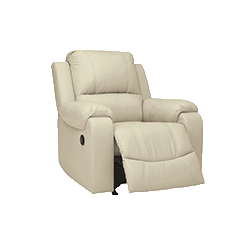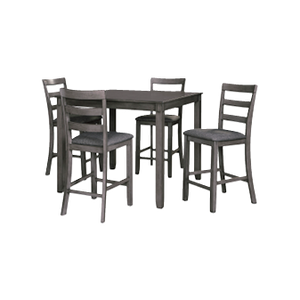Decorating your home with a single style can be limiting, and mixing different design elements can add depth, character, and personality to your space. In this post, we’ll provide you with expert tips and insights to help you navigate the challenges of blending various furniture styles seamlessly. Whether you're a fan of classic, contemporary, or unconventional styles, read on to discover how you can combine them all to create a beautiful and unique living space.
Mixing Furniture & Décor Styles: 24 Tips
From Classic to Contemporary: Finding a Style That Suits Your Home
When it comes to mixing furniture and décor styles, finding the right balance can be a challenge. One of the first steps to achieving a cohesive and visually pleasing look is to identify the styles that suit your home. Here are some tips to help you do just that:
-
Start by taking a look at the architecture of your home. Does it have classic elements such as crown moulding, wainscoting, or arches? Or is it more modern with clean lines and minimalistic features? Your home's architectural style can provide a great starting point for choosing furniture and décor.
-
Consider the era your home was built in. If your home is a historic property, it may be best to lean into classic décor styles, such as traditional or mid-century modern. For newer homes, contemporary or modern styles may be a better fit.
-
Think about your personal style preferences. Do you gravitate towards vintage finds or contemporary designs? Take stock of the pieces you already own and determine which style categories they fall into. This can help guide your future purchases and ensure that your home's style stays consistent.
By considering these factors, you can create a clear vision of the style that will work best in your home, and begin to mix and match furniture and décor in a way that feels cohesive and harmonious.
How to Mix and Match Furniture Styles
Mixing and matching furniture styles is a great way to create a unique and personalized look for your home. However, it can be tricky to know where to start. Here are some ways to help you play to the trend with ease:
-
Start with a neutral base. A neutral colour scheme can help to tie together different furniture styles, creating a cohesive look.
-
Choose a statement piece. A statement piece can anchor a room and provide a focal point for your design. Look for pieces that are unique or eye-catching to add interest to your space.
-
Play with texture. Mixing textures can add depth and interest to a room. Consider combining smooth and rough textures, such as pairing a velvet sofa with a natural wood coffee table.
-
Experiment with colour. Don't be afraid to mix and match different colours. Look for complementary or contrasting hues to create a visually interesting space.
-
Don't forget about lighting. Lighting can have a big impact on the overall feel of a room. Consider incorporating different lighting sources, such as table lamps, floor lamps, and overhead fixtures, to create a warm and inviting space.
-
Use accessories to tie everything together. Items like throw pillows, blankets, and wall décor can create a cohesive look between different furniture styles.
Mixing Furniture Styles by Room
Now that you’ve got the hang of how to mix furniture styles in general, here are some tips to apply those tactics to each room in your home:
Living Room
-
Create a focal point with a statement piece, such as a bold end or side table.
-
Mix and match different seating options, such as a mix of chairs and a sofa, to create a cozy and inviting space.
-
Incorporate different textures, such as pairing a leather sofa with a plush velvet armchair.
Bedroom
-
Choose a cohesive colour scheme to tie together different furniture styles.
-
Mix and match different textures, such as pairing a wooden bedframe with a plush velvet bench.
-
Create a sense of balance by choosing pieces that are proportional in size and scale.
-
Look for unique and eye-catching accessories, such as a statement mirror or decorative pillows, to add interest to your space.
Dining Room
-
Choose a statement dining table that anchors the room and sets the tone for your design.
-
Mix and match different seating options, such as combining upholstered chairs with wooden benches.
-
Add interest with unique lighting fixtures, such as a bold chandelier or a set of statement pendant lights.
-
Incorporate different textures, such as pairing a wooden dining table with metal or glass accents.
Tips for Combining Bold Décor Choices
If your style is a little more eccentric, or you’re looking to add something dramatic to your décor, we’ll show you how to do it in a way that doesn’t look tacky. Here are our tips:
-
Choose one bold element as a starting point. A bold statement piece, like a vibrant area rug or a colourful piece of artwork, can serve as a starting point for the rest of the décor in the room.
-
Stick to a cohesive colour palette. Bold decor choices often involve bright colours and patterns, so it's important to stick to a cohesive colour palette to avoid overwhelming the space.
-
Mix and match patterns. Don't be afraid to mix and match different patterns and textures to create interest and depth in your space. Just be sure to choose patterns that complement each other and stick to your colour palette.
-
Use accent pieces strategically. Bold decor choices can be balanced with more neutral or understated accent furniture. Use them to anchor the space and create a sense of harmony.
We hope these 24 tips for mixing furniture and decor styles have inspired you to get creative and try something new in your home. From starting with a neutral base to experimenting with bold décor choices, these tips can help guide you towards creating a space that truly reflects your personality and style. So go ahead and mix it up – we can't wait to see what you create!






















